
Guerrilla warfare is a form of irregular warfare in which small groups of combatants, such as paramilitary personnel, armed civilians, or irregulars, use military tactics including ambushes, sabotage, raids, petty warfare, hit-and-run tactics, and mobility, to fight a larger and less-mobile traditional military. Guerrilla groups are a type of violent non-state actor.
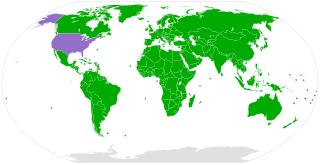
The United Nations Convention on the Rights of the Child is a human rights treaty which sets out the civil, political, economic, social, health and cultural rights of children. The Convention defines a child as any human being under the age of eighteen, unless the age of majority is attained earlier under national legislation.
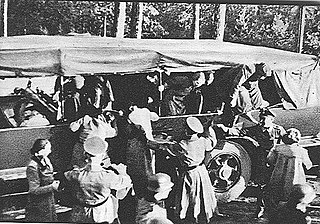
A war crime is an act that constitutes a serious violation of the laws of war that gives rise to individual criminal responsibility. Examples of war crimes include intentionally killing civilians or prisoners, torturing, destroying civilian property, taking hostages, performing a perfidy, raping, using child soldiers, pillaging, declaring that no quarter will be given, and seriously violating the principles of distinction and proportionality, and military necessity.
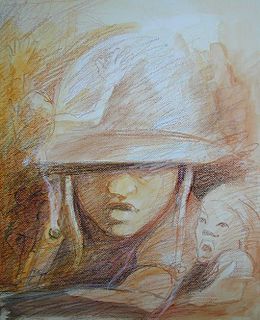
Children in the military are children who are associated with military organisations, such as state armed forces and non-state armed groups. Throughout history and in many cultures, children have been involved in military campaigns. For example, thousands of children participated on all sides of the First World War and the Second World War. Children may be trained and used for combat, assigned to support roles such as porters or messengers, or used for tactical advantage as human shields or for political advantage in propaganda.
Biologically, a child is a human being between the stages of birth and puberty, or between the developmental period of infancy and puberty. The legal definition of child generally refers to a minor, otherwise known as a person younger than the age of majority.
In general, a civilian is "a person who is not a member of the military or of a police or firefighting force". The definition distinguishes from persons whose duties involves risking their lives to protect the public at large from hazardous situations such as terrorism, riots, conflagrations, or wars. "Criminals" are also excluded from the category.
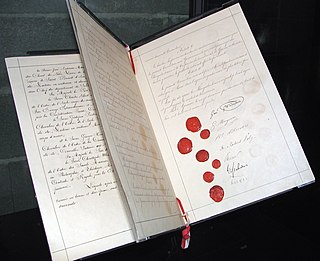
The law of war refers to the component of international law that regulates the conditions for war and the conduct of warring parties. Laws of war define sovereignty and nationhood, states and territories, occupation, and other critical terms of international law.

United Nations Security Council resolution 446, adopted on 22 March 1979, concerned the issue of Israeli settlements in the "Arab territories occupied by Israel since 1967, including Jerusalem". This refers to the Palestinian territories of the West Bank, East Jerusalem and the Gaza Strip as well as the Syrian Golan Heights.
International humanitarian law (IHL), also referred to as the laws of armed conflict, is the law that regulates the conduct of war. It is a branch of international law which seeks to limit the effects of armed conflict by protecting persons who are not participating in hostilities, and by restricting and regulating the means and methods of warfare available to combatants.

A dilemma is a problem offering two possibilities, neither of which is unambiguously acceptable or preferable. The possibilities are termed the horns of the dilemma, a clichéd usage, but distinguishing the dilemma from other kinds of predicament as a matter of usage.
The Optional Protocol to the Convention on the Rights of the Child on the Involvement of Children in Armed Conflict (OPAC), also known as the child soldier treaty, is a multilateral treaty whereby states agree to: 1) prohibit the conscription into the military of children under the age of 18; 2) ensure that military recruits are no younger than 16; and 3) prevent recruits aged 16 or 17 from taking a direct part in hostilities. The treaty also forbids non-state armed groups from recruiting anyone under the age of 18 for any purpose.

Eric Andrew Posner is an American law professor at the University of Chicago Law School. He teaches international law, contract law, and bankruptcy, among other areas. As of 2014, he was the 4th most-cited legal scholar in the United States. He is the son of retired Seventh Circuit Judge Richard Posner.
The Rule of Law in Armed Conflicts Project is an initiative of the Geneva Academy of International Humanitarian Law and Human Rights to support the application and implementation of the international law of armed conflict.

The Geneva Conventions comprise four treaties, and three additional protocols, that establish the standards of international law for humanitarian treatment in war. The singular term Geneva Convention usually denotes the agreements of 1949, negotiated in the aftermath of the Second World War (1939–1945), which updated the terms of the two 1929 treaties, and added two new conventions. The Geneva Conventions extensively defined the basic rights of wartime prisoners, established protections for the wounded and sick, and established protections for the civilians in and around a war-zone. The treaties of 1949 were ratified, in whole or with reservations, by 196 countries. Moreover, the Geneva Convention also defines the rights and protections afforded to non-combatants, yet, because the Geneva Conventions are about people in war, the articles do not address warfare proper—the use of weapons of war—which is the subject of the Hague Conventions, and the bio-chemical warfare Geneva Protocol.

United Nations Security Council resolution 1314 was adopted unanimously on 11 August 2000, after recalling Resolution 1261 (1999) on children and armed conflict and other resolutions including 1265 (1999), 1296 (2000) and 1306 (2000). The Council expressed concern at the impact of conflict upon children and the use of child soldiers, and expressed willingness to consider further measures under the United Nations Charter when dealing with situations of children in armed conflict.
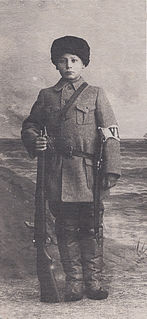
United Nations Security Council resolution 1460, adopted unanimously on 30 January 2003, after recalling resolutions 1261 (1999), 1265 (1999), 1296 (2000), 1306 (2000), 1308 (2000), 1314 (2000), 1325 (2000) and 1379 (2001), the Council called for the immediate end to the use of child soldiers and endorsed an "era of application" of international norms and standards for the protection of war-affected children.
Violence against men (VAM), consists of violent acts that are disproportionately or exclusively committed against men. Men are overrepresented as both victims and perpetrators of violence. Sexual violence against men is treated differently in any given society from that committed against women, and may be unrecognized by international law.
During the first and second civil conflicts which took place in the Democratic Republic of the Congo (DRC), all sides involved in the war actively recruited or conscripted child soldiers, known locally as Kadogos which is a Swahili term meaning "little ones". It has been estimated that the militia led by Thomas Lubanga Dyilo was 30 percent children. In 2011 it was estimated that 30,000 children were still operating with armed groups. The United Nations Organization Stabilization Mission in the Democratic Republic of the Congo (MONUSCO), released a report in 2013 which stated that between 1 January 2012 and 31 August 2013 up to 1,000 children had been recruited by armed groups, and described the recruitment of child soldiers as "endemic".
Dame Carolyn Paula Hamilton DBE is a barrister who specialises in children's rights. She is also director of Coram Children's Legal Centre, an independent national charity dedicated to the promotion and implementation of children's rights based at the University of Essex. Hamilton has the position of professor at Essex.
Since the onset of the insurgency in Jammu and Kashmir in 1988, rape has been used as a weapon of war by Indian security forces; comprising the Indian Army, Central Reserve Police Force (CRPF) and Border Security personnel, against the Kashmiri population. The numerous rapes of Kashmiri Muslim women by Indian state forces is generally ignored. Many women have become victims of rape and sexual assault in the conflict. According to scholar Seema Kazi, separatist militants have also committed rape to some extent, although not comparable in scale with that by the Indian state forces.










